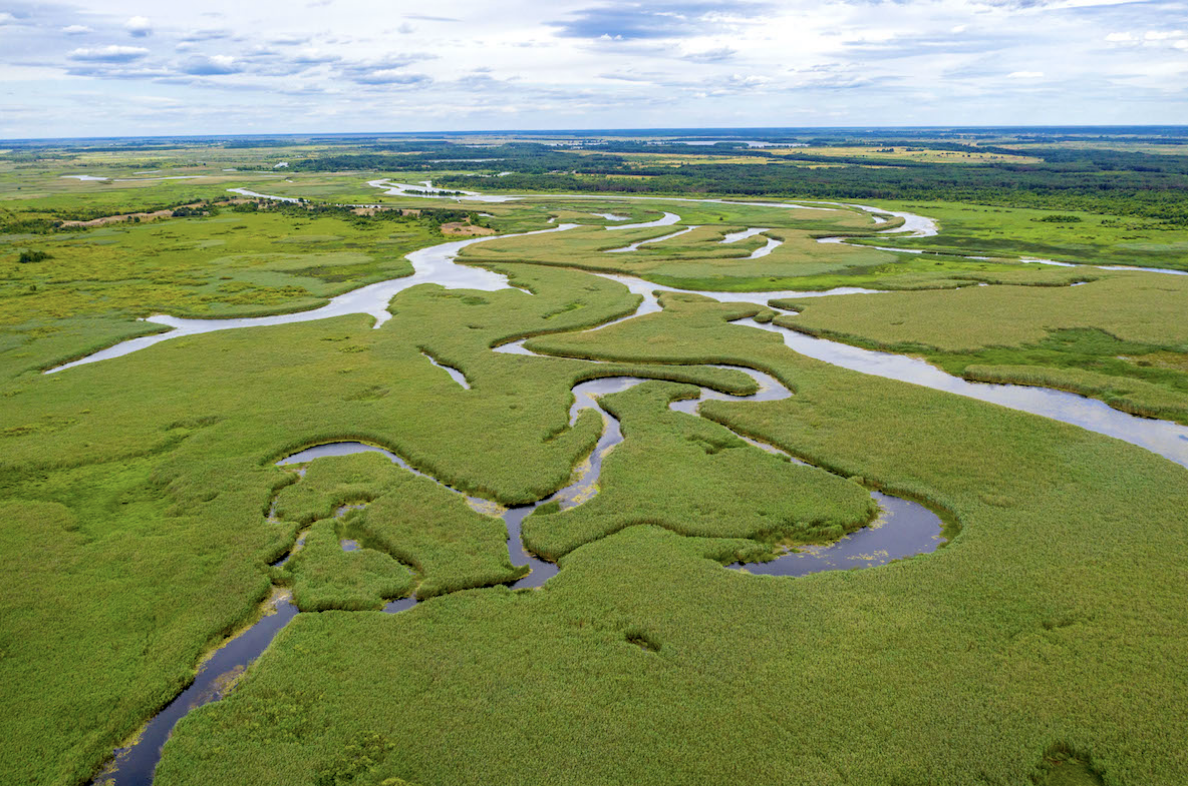This article is reserved for our members
Waterway E40 is one of the most mysterious projects undergoing in Eastern Europe. This international canal, planned to have approximately 2,000 km, aims to connect the Baltic Sea with the Black Sea, passing through Poland, Belarus and Ukraine. The project in its planned route will pass through the Polesia region, one of the most pristine and largest wetlands and forest regions on the European continent, called Europe’s Amazon.
“E” on its name means that one of the main European waterways connecting the Baltic and Black Seas can pass along the rivers. A similar project was already pursued in Latvia, but eventually it was dropped.
The E40 canal aims to enable the transportation of millions of tons of cargo from producing countries further to Europe through this river gate. The total cost of the investment is calculated to be up to roughly 12 bln euros. The initial feasibility analysis of the project dated 2015 indicated the profitability of the venture, however numerous independent economic studies show that the investment is unprofitable, regardless of the proposed route variant.
On top of that unclear financial turmoil, in 2021 a group of scientists called out the planned construction of the E40 waterway as one of the top 15 nature conservation issues in the world currently. Throughout the whole time of planning the project, E40 has never been a subject to a comprehensive environmental impact assessment that would bind risks of the projects across the three involved countries.
“Our main work is currently focused on monitoring the project.” – says Helen Byron, Campaign Coordinator from NGO Save Polesia. “Even though the overall feasibility of the project may seem doubtful at the moment, those big infrastructure projects have a magical tendency to reappear when we don’t expect it.”
The organisation took on a mission to protect the pristine Polesia region by actively opposing the E40 project. They unite actions in three involved countries to keep an eye on and protest the project. “Monitoring the project is not that easy now, taking into account the war and the lack of access to the information in the partnering countries” – adds Byron. “We don’t have an official partner in Belarus, since many non-governmental organisations were closed down there. At the same time, we have troubles obtaining official responses from the Ukrainian government. Our inquiries are clearly not their top priority right now. We continue our work nevertheless, believing that monitoring is even more crucial in ambiguous times.”
This fight gathers a lot of international attention. One of the examples is a petition by You Move Europe. The movement to protect Europe’s Amazon gathered more than 100,000 signatures and is still rolling. The postulates are clear: to abandon the idea of constructing the E40 waterway in Poland, Belarus and Ukraine, stop any European funding for this purpose and protect Polesia’s wild landscape along its pristine rivers.
An investment that will never pay off
An economic analysis made in 2022 by the Dutch consultancy Langhout Ecologisch Advies and published on the World Wetlands Day, reveals the serious consequences of pursuing the E40 Waterway.
The analysis shows long-term losses in the billions of euros that would result from the construction of the key part of the proposed waterway from Gdańsk (the Vistula to Dęblin) to Brest in Belarus. The report concludes that the construction of the approximately 700-kilometres long Polish section of the waterway is too expensive to be economically justified. It was also stated that shipping would unnecessarily compete with green rail transport, causing great damage to the environment.
The Langhout Ecologisch Advies report shows that the investment will never really pay off. The analysis takes into account many factors, including construction time and volume of transport, and shows that even in optimistic scenarios, long-term losses on the Polish section alone would amount to billions of euros, and the cost would be of course borne by taxpayers.
The route in its most likely variant would cost over EUR 6.5 billion. The loss would be most likely even higher assuming any probable construction and financial delays. The Polish part of E40 did not find its place in the European TEN-T framework and for that reason the project has to be covered from a national budget.
Receive the best of European journalism straight to your inbox every Thursday
The study also points to significant costs that were not previously taken into account. These include severe damage to natural habitats, impacts on hydrology and driving up water prices as well as expenses for restoration and compensation measures.
The chosen route variant of the E40 will require Poland to create additional 12 to 15 new river dams. As claimed by The Polish Society for the Protection of Birds (OTOP), this poses not only enormous cost to the taxpayers but also, more importantly, irrecoverable loss to the biodiversity along the Vistula River.
“What we are observing in the Polish case is called a salami slice trick,” says Marek Elas, from OTOP. “It’s a technique of using a series of many small actions to achieve a much larger result that otherwise would be difficult or unlawful to implement.”
It seems just about right. The E40 project is spread between various legislative and strategic documents in Poland. Some of them, like the
Categories
